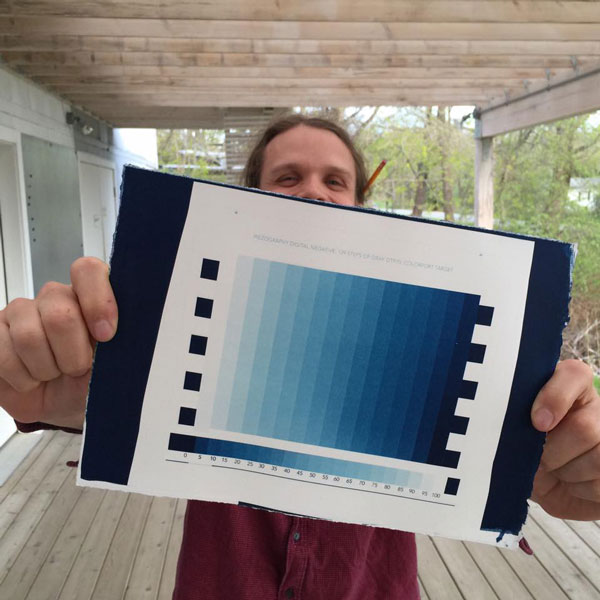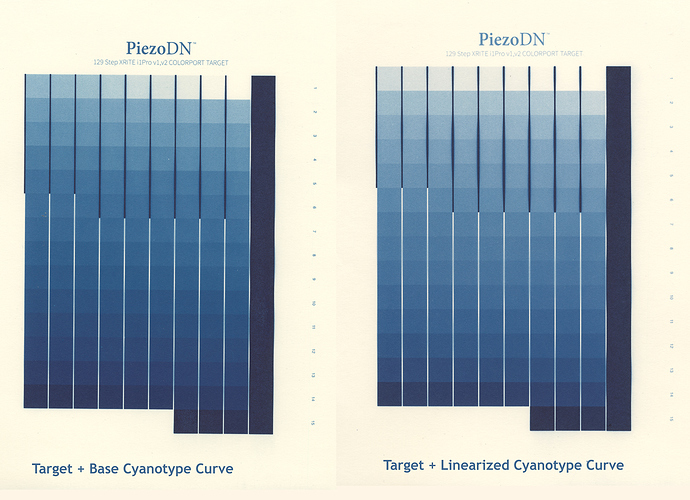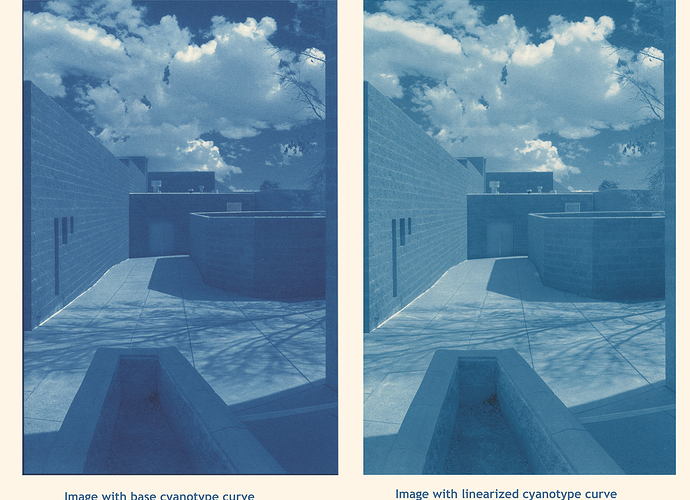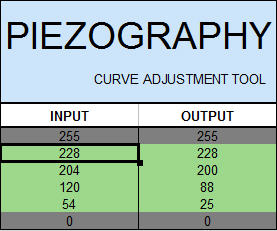In the attached photo (attachment 1), Walker is holding a perfectly linearized target. I am trying to understand why I am not getting anywhere near as good results when I linearize (see attachment 2).
Compared with Walker’s target, mine has high contrast in the highlights and shadows and low contrast in the midtones. My question is: What factors might have contributed to such results?
As you can see, I am making negatives for cyanotype.
□ I am printing negatives on a P400 printer with Piezography2 / PiezoDN, Selenium tone ink on Pictorico Ultra.
□ The target file is PiezoDN-129step-i1 Pro.tif.
□ I printed the initial target negative using the base PiezoDN calibration curve for cyanotype, namely R2000-P2-PiezoDN-Cyanotype.quad. I am using the R2000 curve rather than the P400 curve because there no printer descriptor (PPD file) for the P400. I was advised to use R2000 as the printer model because it is substantially the same printer as the P400. This forces me to use R2000 curves. I hope that’s not the problem!
□ I did not perform the linearization myself because I don’t have a photospectrometer yet. Instead, a friend volunteered to do it for me. He is someone with top-notch equipment and lots of experience calibrating PiezoDN.
□ I named the linearized quad R2000-P2-PiezoDN-Cyanotype-LIN.quad and used it to make the linearized target negative which is printed in attachment 2.
□ Paper, chemistry, exposure times, and development times were identical for both prints.
I also made two prints of a full tonal-range, contrasty image: one using the base curve for cyanotype, and one using the linearized curve (attachment 3). The print made using the linearized curve is only marginally better. Both prints have abrupt tonal shifts in the highlights and shadows, which (I think) is a characteristic of poor linearization. The midtones are drab and lacking in contrast.
I have ordered a SpyderPrint, so I will be able to do my own linearization very soon (and also make icc profiles). If you have any suggestions as to what might have gone wrong in this exercise, I will appreciate hearing from you so I don’t make the same mitsakes next time!





